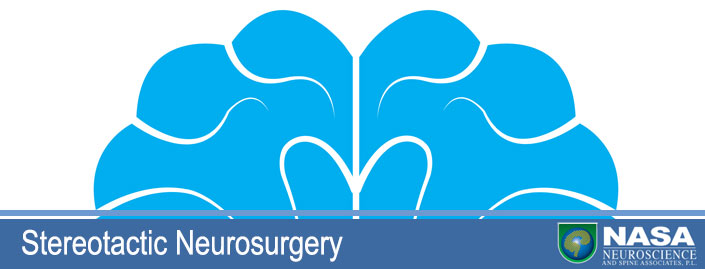Stereotactic Neurosurgery

Stereotactic procedures use a coordinate system created by the use of MRI scans to develop a 3D map. This map guides the surgeon to an exact location within the brain where the surgical procedure is the be performed. Stereotactic procedures are not only minimally invasive, they also allow for precise procedures such as biopsies in hard to reach locations.
Stereotactic Procedures are commonly used for the following conditions and procedures:
- Movement Disorders such as Parkinson’s Disease
- Seizures
- Brain Tumor Biopsy
- Brain Lesions
Advantages to Stereotactic Procedures
- The use of three-dimensional images combined with localization techniques allows surgeons to locate the tumor, lesion, or coordinates with accuracy.
- Radiation can be applied in a highly focused manner with fewer treatments
- Can be used to treat and biopsy hard to reach areas on the brain in a minimally invasive manner
Stereotactic Surgery Process
MRI Scan
A Stereotactic surgery procedure will usually begin with a MRI scan. The MRI (CT scans are also used) creates a 3D map of the brain and applies a coordinate system. A frame is placed around the patients head to help keep it on place during the scan and provide an accurate scan.
Procedure
The 3D images created are used as guides during the surgical procedure to pinpoint the location of the target. A computer programs is used to coordinate the incision site
The next step varies based on condition, but a stereotactic surgery can:
- Destroy or remove tissue
- Locate tissue
- Sample tissue (biopsy)
Recovery
Stereotactic procedures are minimally invasive.
Stereotactic Radiosurgery
This type of stereotactic procedure is applied to deliver radiation therapy to a precise location in the brain. Like stereotactic surgery, this procedure starts with 3D imaging and immobilization procedures. Once the coordinates have been determined, radiation is delivered.

